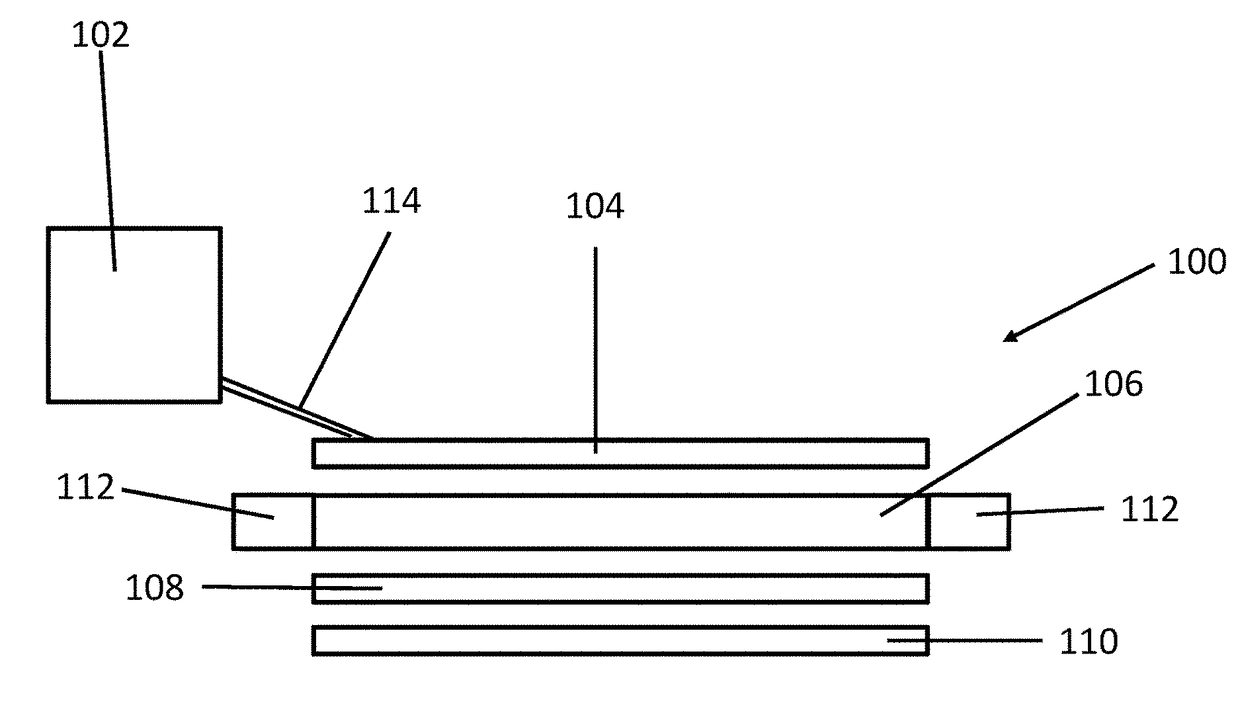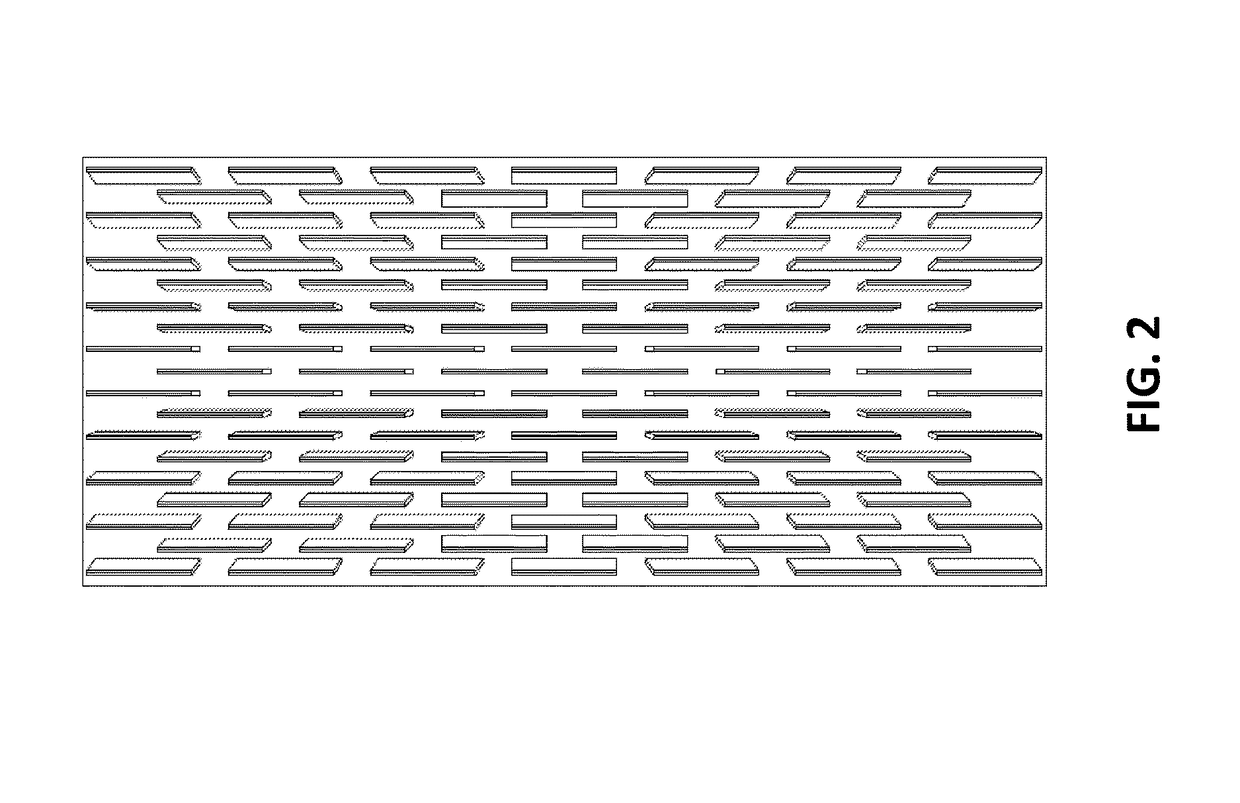Wound dressing
a wound dressing and wound technology, applied in the field of wound dressings, can solve the problems of waste generation, and achieve the effects of increasing the visibility of wounds, mechanical weakening of materials, and increasing the visibility of opaque materials
- Summary
- Abstract
- Description
- Claims
- Application Information
AI Technical Summary
Benefits of technology
Problems solved by technology
Method used
Image
Examples
example 1
[0138]To create the wound dressing of example 1, a perforated sheet of polyurethane film was applied to the wound contact surface of a sheet of 4 mm depth polyurethane foam (Allevyn, Smith & Nephew Medical Limited).
[0139]The wound contact surface is that surface which is placed adjacent to or in direct contact with the wound. The non-wound contact surface is that surface which is remote from or opposite the wound contact surface.
[0140]A cutter of specification shown in FIG. 2 (Cutter blade with 15 mm length blades, linear spacing 5 mm, vertical spacing 5 mm) was used to cut slits in the sheet of polyurethane foam to form a lattice. The cutting action also formed slits in the polyurethane film.
[0141]Following cutting, an extensive force was applied to the lattice in a direction perpendicular to the longitudinal axis of the cuts or slits to produce an open lattice as shown in FIG. 3. A moisture permeable top-film was heat laminated to the non-wound contact layer or surface of the open...
example 2
[0142]To create the wound dressing of example 2, a perforated sheet of adhesive polyurethane film was applied to the wound contact surface of a sheet of 4 mm depth polyurethane foam (Allevyn, Smith & Nephew Medical Limited). The adhesive surface of the film was covered by a siliconised release paper. A cutter of specification shown in FIG. 2 (Cutter blade with 15 mm length blades, linear spacing 5 mm, vertical spacing 5 mm) was used to cut slits in the sheet of polyurethane foam to form a lattice. The cutting action also formed slits in the polyurethane film and siliconised release paper.
[0143]The wound contact surface is that surface which is placed adjacent to or in direct contact with the wound. The non-wound contact surface is that surface which is remote from or opposite the wound contact surface.
[0144]Following cutting, the siliconised release paper was removed and an extensive force was applied to the lattice in a direction perpendicular to the longitudinal axis of the cuts o...
example 3
[0145]To demonstrate the effectiveness of the wound dressing of example 2, the siliconised release paper was removed from the perforated adhesive film and placed, adhesive side down, upon intact skin. The polymeric film release sheet was then removed. A uni-directional contractile force was generated on the skin, upon removal of the polymeric film release sheet, and in a direction perpendicular to the axis of the cuts.
PUM
 Login to View More
Login to View More Abstract
Description
Claims
Application Information
 Login to View More
Login to View More - R&D
- Intellectual Property
- Life Sciences
- Materials
- Tech Scout
- Unparalleled Data Quality
- Higher Quality Content
- 60% Fewer Hallucinations
Browse by: Latest US Patents, China's latest patents, Technical Efficacy Thesaurus, Application Domain, Technology Topic, Popular Technical Reports.
© 2025 PatSnap. All rights reserved.Legal|Privacy policy|Modern Slavery Act Transparency Statement|Sitemap|About US| Contact US: help@patsnap.com



